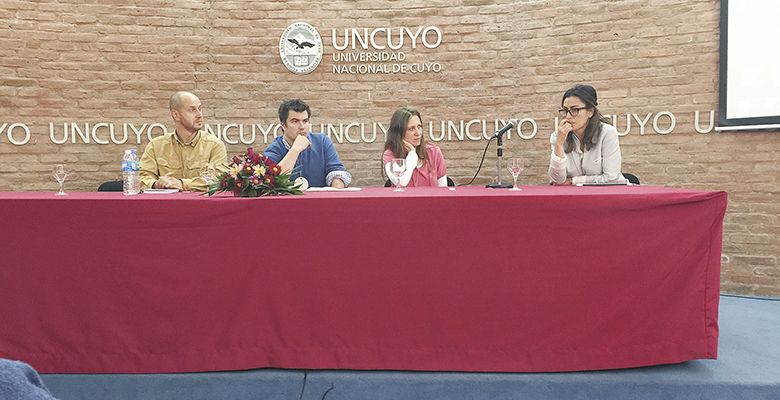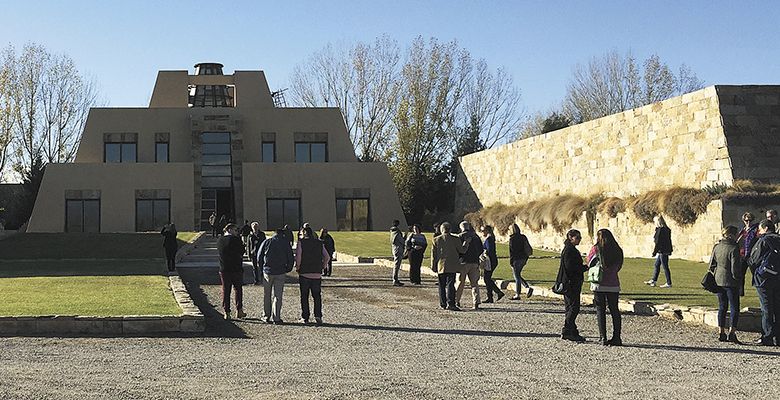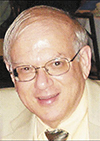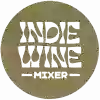Econ in Argentina
AAWE members gather in Mendoza for Malbec, math and more
By Neal Hulkower
Returning to the Southern Hemisphere for the second time since 2013 — see “Stellar in Stellenbosch,” OWP, August 2013 — members of the American Association of Wine Economists (AAWE) convened May 26–30 in Argentina for the ninth annual conference hosted by the National University of Cuyo (UNCUYO), Mendoza.
As we mingled during the welcome reception at the Park Hyatt Mendoza with colleagues whom we hadn’t seen since the previous gathering, several bodegas poured a range of local wines accompanied by appetizers and live music from a UNCUYO chorus.
Serious business began early the next morning and continued through the following day. The largest number of presentations ever, 140, was accepted. More than 100 were delivered by speakers from six continents, representing a remarkably broad range of disciplines, including economics, statistics, marketing, viticulture and planning.
Plenary sessions covered productivity, research and development, along with history. Additionally, five blocks of four parallel sessions addressed red climate change and sustainability, reputation and region, tourism and new products, regulation and politics, and more.
I presented a session with a most nerdy title, “Minimum Percent Error-Zero Percent Bias Regression for Wine Economists.” I introduced an alternative way to fit formulas to data developed by cost analysts in order to build models to estimate cost, schedule or technical parameters. The intent was to transfer this approach from one community to another with similar needs for a wider range of predictive tools.
Dan Moscovici of Stockton University led the session on climate change and sustainability with a global survey of practices. He noted that New Zealand was the first to emphasize sustainability in 1994 and that the U.S. does not have a standard platform but rather a potpourri of accreditations, including Oregon Certified Sustainable Wine. While the International Organization of Vine & Wine (OIV) suggests five criteria, his goal was to define a wine economics-based standard for sustainability as an international best practice, allowing one to “be sustainable without spending a lot of money.”
In the same session, Maryam Hariri, a planner at New York University, described her research on the relationship between temperature and labor supply. She examined data from wineries in New Jersey and New York with the goal of understanding how different variables — size, management and financial structure — influence a winery’s capacity to gain access to the labor resources needed to ensure timely response to extreme weather events.
The session on tasting featured presentations by several well-known researchers, including Robert Hodgson of Fieldbrook Winery and Robin Goldstein of U.C. Davis. Hodgson tested a claim that experts prefer more expensive wine and concluded — based on several thousand observations of expert wine judges covering several years of major U.S. wine competitions — that they do slightly but not significantly.
Observing the poor agreement among judges in wine competitions, Jing Cao and Lynne Stokes of Southern Methodist University examined whether this variability is predictable. Using the same data base as Hodgson, they concluded that varietal type and flights of between 10 and 40 wines do not affect judges’ agreement, whereas flights of fewer than 10 wines “are associated with lower agreement among judges.” Also, they found that judges have consistent — and slightly better — agreement as the process of wine evaluation progresses, indicating fatigue does not affect their performance within the range investigated.
Goldstein presented a progress report on his effort to explain Price-Quality Inversion (PQI) involving blind tastings of various beverages and foods. A particular example of PQI is the preference for the least costly wine over the most expensive, which is likely the result of the most expensive wine being tasted while still too young. He hypothesizes “that wine expertise shapes individuals’ sensory perceptions, giving rise to ‘acquired tastes’ for the types of expensive wines that most consumers start out disliking.”
Tapas lunches were served in a tent along with a selection of wines from various producers and featured, among several varietals, Malbec, Mendoza’s signature grape. While many could use more time in the bottle, one example never aged in oak provided a refreshing experience. The most memorable, however, was the ethereal 2007 Bodega Benegas Cabernet Franc Benegas Lynch Libertad Vineyards from 120-year-old vines.
Following each day of sessions, we traveled by bus for dinner. The first was hosted at Bodega Septima followed by Divina Marga the next day. Both offered regional food and entertainment.
On the first day of wine touring, we visited the renowned Catena Zapata Winery housed in a Mayan-inspired building surrounded by Adrianna Vineyard, a source for some of the most celebrated Malbec and Cabernet Sauvignon in the area. Next, we traveled to Salentein Winery for lunch, which was served with a reserve Sauvignon Blanc and Malbec. The elegant facility blended handsomely into the desert landscape framed by the snow-tipped Andes.
On the second day of touring, we visited Casarena Winery. There, we tasted a wide range of wines, including a 2012 Ramanegra Reserva Pinot Noir. We then lunched and toured at Familia Zuccardi Winery & Olive Oil Farm. We were treated to a remarkable selection of vegetables and meats grilled on a large parrilla accompanied by three Santa Julia wines: Chardonnay, Malbec and Tardío, a dessert wine.
Of the four AAWE meetings I’ve attended, this one, in particular, seemed to pinpoint opportunities for significant international collaboration. In addition to the challenge set forth by Moscovici, a compilation of economic histories of wine regions around the world was identified as an undeveloped area.
The confluence of gray-haired wisdom, mid-career drive, big data and analysis tools should be sufficient to ensure that future gatherings — June 20–25, 2016, in Bordeaux — will have much to discuss.
For more information, visit www.wine-economics.org.
Neal Hulkower is a mathematician and an oenophile living in McMinnville who also likes to cook. His writing has appeared in a wide range of academic and popular publications. He can occasionally be found pouring Pinot Noir at a Dundee Hills winery.




 Neal Hulkower is a mathematician and an oenophile living in McMinnville. His writing has appeared in academic and popular publications. He occasionally pours Pinot at a Dundee Hills winery.
Neal Hulkower is a mathematician and an oenophile living in McMinnville. His writing has appeared in academic and popular publications. He occasionally pours Pinot at a Dundee Hills winery.









